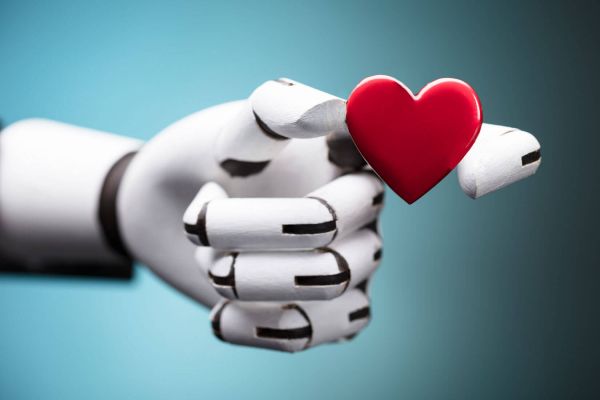In these times of Social Distancing, there is new found respect across all sectors for everything digital. The field of Artificial Intelligence (AI), finally, is getting its due attention from sectors and quarters which were always sceptical that AI is a thing of future and not relevant for their kind of work. Currently, there is a lot of interest from media, governments and students of all hues to understand the field better. AI has seen its highs and lows in last 50 years but now with the accessibility of enormous amounts of data, and advances in computation power have brought us to an exciting and remarkable stage in AI.
‘With great power comes great responsibility’ – Spiderman, Movie (2002)
It is completely on us, as a generation, whether to still keep worrying about it or to start harnessing its power for the larger social good. AI can be a major force for social good; it depends in part on how we shape this new technology and the questions we put forward to inspire young researchers. Obviously, like any new technology area, there are concerns in realms of ethics, safety, and legalities; however, the answer lies in controlled and governed tapping of the technology for exploring the potential for societal benefits.
Artificial Intelligence – Basic Understanding
AI has many definitions, such as machines that can think like humans, machines that act rationally, a computer system that can perceive, reason and act, etc. A simple, yet definitive understanding of Artificial Intelligence can be – A computer or a program that produces a result that the programmer has not foreseen, based on what the program has learnt in the process of its execution. Essentially, a software that learns like a baby and builds its knowledge over a period of time, is Artificial Intelligence. In traditional programming, Input and Logic used to be given to the machine and it used to execute the operation and give output. In Artificial intelligence, the machine / program creates its own logic on seeing the input data and creates output accordingly.
Considering the current technology landscape where large amount of data is being created and being stored in smaller and smaller devices (increase in capacity) in all fields; this data is becoming easily portable with high bandwidth internet and cloud computing. In simple terms, the large amount of datasets are being made accessible with technological advancements – so, the basic requirements of AI to come into play are very much there and therefore, we are starting to see AI entering our daily life – without us realising about it. Eg. Siri or Alexa, Google’s prediction of our search, Customised suggestions for you on e-commerce portals etc.
Now, before getting into what AI can do in our social impact space, let me also add that there are three types of AI – a) Narrow or Weak AI – Where a technology outperforms humans in some very narrowly defined task; (b) General or Strong AI – Where a software program starts performing different tasks like human and (c) Artificial Superintelligence – when the machine will surpass human thoughts. We are currently in the age of Narrow / Weak AI only.
Tapping AI for social good
There are multiple areas within the social sector where AI can be applied to solve social problems even while we deal with issues such as data accessibility, lack of awareness and AI talent shortage in the sector constraining its application for social good. The A-B-C-D list of the potential use cases is:
- Agriculture: With the help of AI, farmers can now analyse a variety of things in real time such as weather conditions, temperature, water usage or soil conditions collected from their farm to better inform their decisions. AI sensors can also help farmers in precision farming and thus avoid over application of chemicals. Combined with data coming in from smartphones and drone camera based sensors, AI can be used to detect any disease / pest infestation in a crop, early enough to keep it under check. AI can also be used to create seasonal forecasting models, based on weather patterns. In developing economies like India, which are significantly dependent on agriculture sector, the real task is to make the technology solution reach cheaply to large number of its farmer base. There are already some start-ups in this sector which have emerged. Scaling this use case to a wider adoption has the potential to impact food security of a nation.
- Building Smart Cities: City governments and urban planners are starting to use AI in planning public infrastructure with increasing population. The data feed from cameras can be analyzed and notifies the users regarding the congestion and traffic signal malfunctions. Adopting AI for smart recycling and waste management can provide a sustainable waste management system. One such example could be of Barcelona’s waste management system which has sensors and devices fitted on waste bins that send notifications to the authorities to dispatch the waste collection trucks as soon as they are about to be filled
- Crime Prevention: AI is being used in crime investigation to sniff through large amount of data and spotting patterns – this is helping in identifying crime hotspots and accordingly planning of policing and security measures. I have personally done a brief stint with Gurugram police cyber cell and learnt first hand about crime prevention measures using AI. In Singapore, where this has already been initiated, a network of cameras and sensors have been installed in almost every corner which helps to identify people who are smoking in prohibited zones or are loitering from a high-rise housing. The cameras enable the authorities to monitor crowd density, which alerts the system if any unexpected rise start to happen.
- Disaster Control: AI can be used with satellite data to map and predict the progression of wildfires, floods and thereby optimize the response of firefighters and rescue agents. Similarly in case of epidemic spread, it can help create heat maps and predict areas where and when it would spread. This can immensely help the government / rescue missions for better preparedness. Eg. Artificial intelligence can use the seismic data to analyze the magnitude and patterns of earthquakes. Such data can prove beneficial to predict the occurrence of earthquakes. Google and Harvard are already working together to develop an AI system that can predict the aftershocks of an earthquake. Google is also building an AI platform to predict floods in India and warn users via Google Maps and Google Search. The data for training the AI system is collected with the help of rainfall records and flood simulations. IBM is developing Watson that will predict volcanic eruptions using seismic sensors and geological data.
- Education: Adaptive-learning technology based recommendations and curated content to students based on their learning habits, past success and engagement with the material, something which is also called hyper-personalisation is possible with application of AI in education. Appropriately used, AI can be tapped by NGOs to plan where in a district to plan a school, for maximum impact. For lot of educational initiatives, AI can help predict school dropouts to enable the intervention organisation to prevent it timely.
- Financial Inclusion: Initiatives related to efficiency and effective management of public, social sector entities and including strong institutions, transparency and financial management, can be streamlined and made better using AI. Already multiple fintech startups have started to leverage AI for offering personalised financial solutions. The process of analysing risk and approving a loan is now already automated using AI.
- Health Care: Potential of leveraging AI in healthcare is immense. Ranging from AI-driven predictive modelling for forecasting in-hospital mortality, prolonged length of stay, pharmacy management (triggering order of medicines based on nature of patients coming to hospital, pulling data from admissions), AI doctors to offer health advice to patients with common symptoms to free up primary care appointments for complex cases. During complex surgeries, rather than doctors needing to depend on memory / referring old case logs, AI based surgeon support can help reduce time for such referrals and thus saving lives. AI-enabled wearable devices are already available which can detect susceptible people’s key parameters like BP, Heart rate etc. and with almost 85% accuracy predict potential early signs of diabetes (early-stage diagnosis). In rural areas, vital parameter monitors can be used for screening, monitoring, and diagnostic assistance, AI applications can help analyse chest X-rays and other radiology images, read ECGs and spot abnormal patterns, automatically scan pathology slides and even assess fundus images for signs of retinopathy
Above mentioned seven areas are just a sample of what all can be achieved, if the technology is tapped well. The beauty in every of these use case scenarios is that we can put in multiple set of data variable and the AI keeps getting stronger / more accurate with that. Eg. In education case, if we also bring in an element of nationality or in weather forecast we bring in data of number of trees in the catchment; the accuracy of the model keeps getting better. Applied intelligently, the AI holds power to reduce or eliminate bias based on race, sexual orientation, religion, citizenship, (and disabilities).
Having understood the possibilities, it is equally important to understand that AI is neither the final nor the ultimate solution for all societal problems. It is at best, a tool to implement the social initiatives in a more efficient way and enable better management of societal challenges.
With research ongoing, I am sure more use cases would emerge to enable better decision making. I have personally mentored more than 2000 students over virtual learning platforms in the subject of Artificial intelligence and am confident that the same youth would be instrumental in evolving the new use cases and there would be resources available to take the research forward. Slowly but surely, money availability in the field of AI for social impact is increasing. Initiatives like Microsoft AI for Earth, Google’s AI for Social Good, and AWS Imagine Grant select non-profit organizations globally and provide financial, technical and implementation support. McKinsey has come up with a discussion paper, “Notes from the AI frontier: Applying AI for social good”. More and more such researches and grants are expected to be available, going forward.
I would love to hear your feedback and take on this perspective of mine. Also if any clarification is needed in any technical part or even ideology behind it, you are welcome to reach out to me.
Authored by :
Aviral Apurva
(Co-Founder and CTO, NuSocia)




